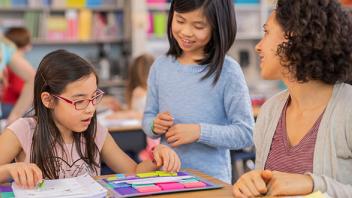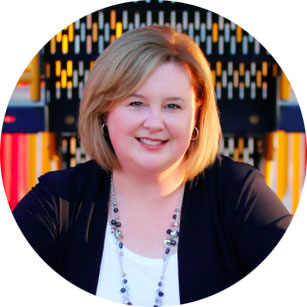Despite years of research that concludes inclusion is best for students with AND without disabilities, there are STILL misconceptions about inclusive classrooms. In a recent discussion with Understood , I summarized three of those big misconceptions:
1. The first big misconception about inclusion is the concern that the student with disabilities will not be able to “keep up” with the class curriculum
Fortunately, inclusive classrooms recognize that not every child will be learning at the same rate, and at the same time.
You will find that in an inclusive classroom, teachers use inclusive instructional strategies such as Universal Design for Learning (UDL), lesson accommodations, and even curriculum modifications to help the students access and learn class material. Here is an example of UDL in action:
Students also have the use of assistive technology to support their education program. In additon, paraeducators and other school professionals all work with the teacher to ensure that the student is learning to the best of their ability. Thus, in an inclusive classroom, students are not expected to “keep up” but to “keep learning.”
2. The second big misconception about inclusion is that including a child with disabilities in a general education class will be distracting for the other children.
Again, experience and research says otherwise.
As mentioned above, students with disabilities have significant supports in the classroom to help them access lessons and participate in class activities in an appropriate and meaningful way. Furthermore, we must remember that students come from all walks of life. ANY child in the classroom has the potential to distract others, depending on their needs and wants, family life, or social/emotional development.
With this in mind, inclusive classrooms establish social and emotional supports for all students. Teachers are responsive to student needs and have strategies to maintain a healthy learning environment. Below is an example of a teacher who uses Morning Meetings to check how her students are feeling before the start of the day:
3. Finally, the third big misconception about inclusion is that some people think inclusion is a program.
Inclusive education is not a program. It is an educational philosophy that values the participation and education of students with and without disabilities in the same classroom.
This philosophy is the foundation of how a school system functions. Administrative decisions, staffing, training, resources, scheduling, and curriculum are derived from inclusive beliefs about education.
Since it is rooted in the belief that students with and without disabilities have an equal right to a meaningful education, inclusion is also a social justice issue. Barriers in our communities and classrooms are removed so that every child can participate and learn to the fullest extent possible.

Whether you are an educator, parent, or community member, knowing the truth about inclusion can help us develop school systems that truly prepare our children for a future in our diverse world. If you would like to know more about inclusion, you can read dozens of articles at The Inclusive Class or pick up a copy of Inclusion in Action: Practical Strategies to Modify Your Curriculum.
Nicole Eredics is an educator who specializes in the inclusion of students with disabilities in the general education classroom. She draws upon her years of experience as a full inclusion teacher to write, speak, and consult on the topic of inclusive education to various national and international organizations. She specializes in giving practical and easy-to-use solutions for inclusion. Nicole is creator of The Inclusive Class blog and author of a new guidebook for teachers and parents called, Inclusion in Action: Practical Strategies to Modify Your Curriculum . For more information about Nicole and all her work, visit her website .

